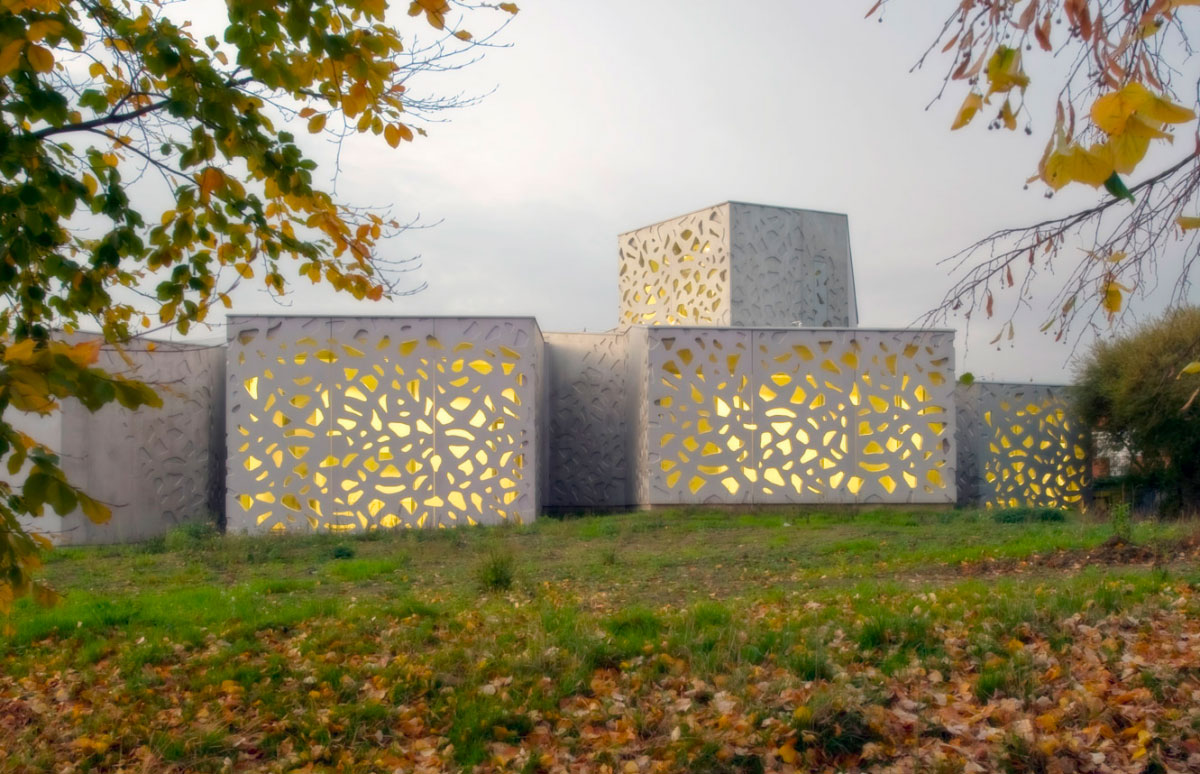Explore France’s premier modern art museums with detailed insights on collections, architecture, and visitor information.
Centre Pompidou – Paris
The Centre Pompidou is one of the most important museums of modern art in France. Located in the Beaubourg district of Paris, it opened to the public in 1977. The building is known for its innovative design by Renzo Piano and Richard Rogers, with structural and mechanical systems exposed on the exterior. This architectural approach creates open, flexible interior spaces suitable for exhibitions. The Centre houses the Musée National d’Art Moderne, which includes over 100,000 works from the 20th and 21st centuries. Visitors can view pieces by Picasso, Matisse, Kandinsky, Braque, and Duchamp, as well as contemporary artists like Joseph Beuys and Sophie Calle.
The museum organizes major temporary exhibitions, often focused on single artists or specific movements. It also hosts performances, talks, and film screenings. The building includes a public library, a documentation center on industrial design, and educational spaces. The top floor features a panoramic terrace with a view of central Paris. Entry to the permanent collection costs €15 (around \$16.20), with free access every first Sunday of the month. The site will close in September 2025 for renovations lasting five years, with objectives including compliance with safety standards and improved energy performance. Reopening is scheduled for 2030.


Fondation Louis Vuitton – Paris
The Fondation Louis Vuitton is a private contemporary art museum located in the Bois de Boulogne, in the west of Paris. It was inaugurated in 2014 by the luxury group LVMH, with the aim of promoting modern and contemporary art on an international scale. The building was designed by Frank Gehry, whose structure of 12 curved glass sails covers a total area of 11,700 m². The architecture combines steel, glass, and laminated wood, and includes 3,850 m² of gallery space across eleven exhibition rooms.
The Fondation presents both its own collection and temporary exhibitions. It focuses on 20th and 21st-century visual arts, including painting, photography, sculpture, and installation. Artists featured include Jean-Michel Basquiat, Cindy Sherman, Olafur Eliasson, and Ellsworth Kelly. In 2025, it hosted the major exhibition “David Hockney 25”, covering 70 years of work and including 456 pieces from both private and public collections.
The Fondation also supports live performances, music events, and public talks. It is open daily except Tuesdays. Entry costs €16 (around \$17.30) for adults. Advance online booking is recommended due to high visitor numbers. The site is accessible by shuttle from Place Charles-de-Gaulle or by metro to Les Sablons (Line 1).
Musée d’Art Moderne de Paris (MAM Paris)
The Musée d’Art Moderne de Paris is part of the municipal network of Paris museums and is located in the eastern wing of the Palais de Tokyo, in the 16th arrondissement. Opened in 1961, the museum focuses on 20th-century and contemporary art, with a permanent collection of more than 10,000 works. It covers key artistic movements such as Fauvism, Cubism, Dada, Surrealism, and New Realism.
The museum’s holdings include major works by Robert and Sonia Delaunay, Amedeo Modigliani, Albert Gleizes, Georges Rouault, and Christian Boltanski. It also includes installations, photography, and video art. One of the highlights of the permanent collection is La Fée Électricité by Raoul Dufy, a monumental fresco over 600 m².
Temporary exhibitions are presented in dedicated spaces and focus on single artists or themes, often drawing on partnerships with international institutions. Admission to the permanent collection is free, while temporary exhibitions are ticketed (typically €12, or around \$13).
The building is an example of 1930s modernist architecture, overlooking the Seine River and close to the Trocadéro. The museum is accessible via Metro lines 6 and 9 (Alma-Marceau or Iéna stations). Guided tours and educational workshops are available year-round.
Le Consortium – Dijon
Le Consortium is a contemporary art center located in Dijon, in the Bourgogne-Franche-Comté region. It was founded in 1977 by a collective of artists and curators. Since its inception, the institution has been a leading force in the promotion of experimental and conceptual art in France. In 2011, it moved into a new building designed by Japanese architect Shigeru Ban, offering 4,000 m² of exhibition space.
The program focuses on international contemporary art, and the permanent collection includes works by On Kawara, Cindy Sherman, Richard Prince, Yayoi Kusama, and Maurizio Cattelan. Le Consortium also supports emerging artists, often giving them their first major solo exhibitions in France. The center is known for curating coherent, research-driven exhibitions and operates as a non-profit institution.
Beyond exhibitions, Le Consortium is active in publishing catalogues, conducting curatorial research, and developing off-site art projects. It is also responsible for advising public and private collections, including the Fondation de Galbert and other regional institutions.
Admission is free, and the center is open from Wednesday to Sunday. Dijon is accessible by TGV from Paris (1 hour 40 minutes). Le Consortium is located near the city center and is reachable on foot or by tram (T2, station “Monge”).
MAC VAL – Vitry-sur-Seine
The Musée d’Art Contemporain du Val-de-Marne (MAC VAL) is located in Vitry-sur-Seine, approximately 7 km south of central Paris. Opened in 2005, it is the first French museum specifically created to focus on contemporary art produced in France since the 1950s. It was established to decentralize cultural offerings and strengthen access to art in suburban areas. The museum was designed by architect Jacques Ripault and covers a total surface area of 13,000 m², with 4,000 m² dedicated to exhibition space.
The permanent collection includes over 2,500 works by French artists or artists working in France. Notable names include Christian Boltanski, Annette Messager, Claude Closky, Gilles Barbier, and Pierre Huyghe. The museum focuses on installation, photography, sculpture, video, and conceptual practices, and it integrates works from multiple generations of artists.
MAC VAL hosts temporary exhibitions three to four times per year, often highlighting emerging voices or thematic questions in contemporary society. The site also includes a documentation center, an auditorium, and a landscaped garden accessible to the public.
Admission costs €5 (about \$5.40), and entry is free on the first Sunday of each month. The museum is accessible by RER C (station Vitry-sur-Seine) and by bus from central Paris.
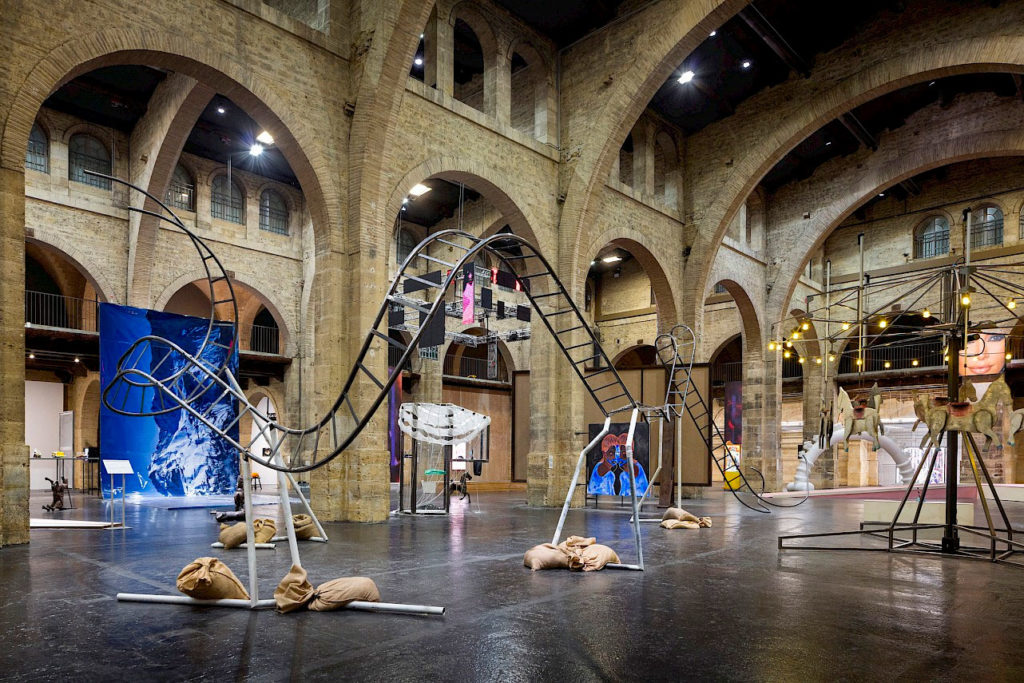
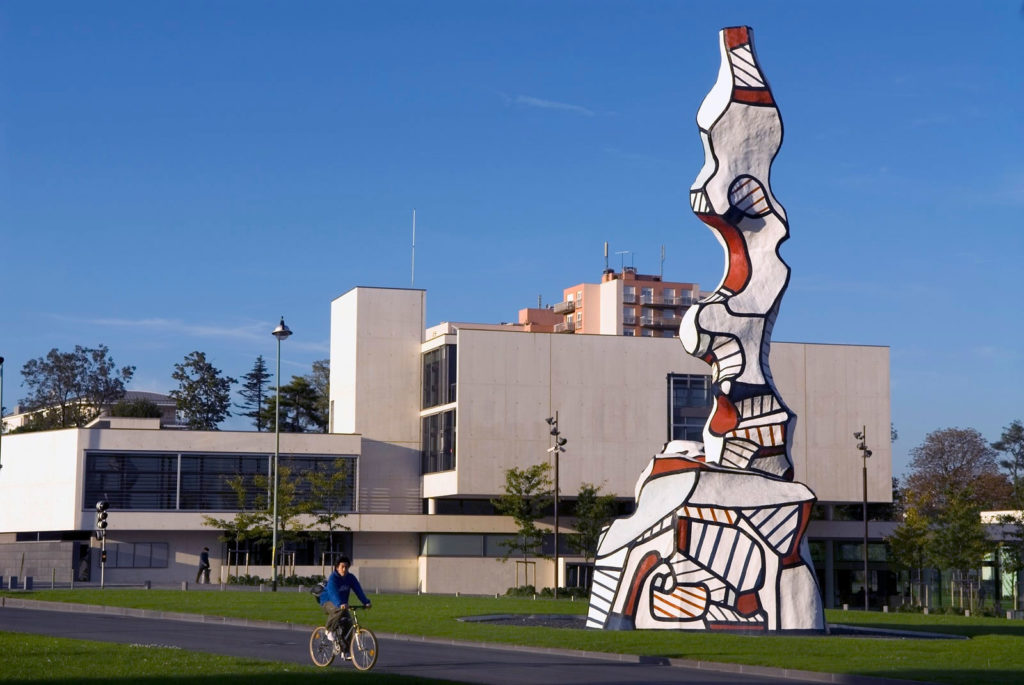
CAPC – Musée d’Art Contemporain de Bordeaux
The CAPC Musée d’Art Contemporain is located in the Chartrons district of Bordeaux, in a former colonial warehouse built in the 19th century. The museum was created in 1973, and the site was renovated between 1984 and 1990 by architect Jean-Paul Viguier. The total surface area is about 3,000 m², including large brick vaults and open volumes ideal for large-scale contemporary artworks.
The CAPC’s permanent collection features more than 1,300 works by over 190 artists. The focus is on international contemporary art from the 1960s to the present. Key figures in the collection include Andy Warhol, Daniel Buren, Sol LeWitt, Christian Boltanski, and Michelangelo Pistoletto. The collection offers a strong representation of conceptual art, minimalism, and Arte Povera.
The museum organizes 3 to 5 temporary exhibitions per year. These often include collaborations with major international institutions and focus on experimental practices. In addition to exhibitions, CAPC runs educational programs, including guided tours, workshops for schools, and public lectures.
Admission to the museum is €6 (around \$6.50) for adults. Entry is free on the first Sunday of each month. The museum is located about 2 km from Bordeaux’s main station and is accessible via tram line B (stop: CAPC).
Musée des Beaux-Arts de Lyon
The Musée des Beaux-Arts de Lyon is located on Place des Terreaux, in the former Abbaye Royale des Dames de Saint-Pierre, a Benedictine convent dating from the 17th century. It was transformed into a museum during the French Revolution and officially opened in 1803. Today, it is one of the largest fine arts museums in France, both in terms of surface area and the number of works exhibited.
The museum spans 70 rooms and presents more than 7,000 artworks, covering antiquity, the Middle Ages, the Renaissance, and modern and contemporary periods. The modern art section, located on the top floor, includes works by Rodin, Monet, Vuillard, Bonnard, and artists from the École de Paris and early 20th-century abstraction. Key themes include Impressionism, Symbolism, and early modern sculpture.
The museum also features important collections of sculpture, Egyptian antiquities, coins, and ceramics. Its structure and layout allow for thematic and chronological exhibitions. Entry to the permanent collection costs €8 (about \$8.60), with free admission every first Sunday of the month.
Adjacent to the galleries is a public garden, accessible with a museum ticket or separately. The museum is open every day except Tuesdays and is served by Metro Line A (station: Hôtel de Ville – Louis Pradel).
Musée d’Art Moderne et Contemporain – Strasbourg (MAMCS)
The Musée d’Art Moderne et Contemporain de Strasbourg (MAMCS) opened in 1998 and is located on the banks of the Ill River, near the historic Petite France district. Designed by architect Adrien Fainsilber, the building offers 10,000 m² of total space, including 4,500 m² dedicated to exhibitions. The architecture features large glass façades and open volumes that provide natural lighting and flexible display areas.
The museum’s collection spans from the 1870s to the present day and reflects a cross-border cultural identity shaped by both French and German influences. It includes works by Gustave Doré, born in Strasbourg, Jean Arp, a founding figure of Dada and Surrealism, as well as Victor Brauner, Sophie Calle, and Georg Baselitz. Movements represented include Art Nouveau, Symbolism, Dada, and contemporary installation and video art.
MAMCS organizes 3 to 4 temporary exhibitions per year, focusing on historical perspectives or current art practices. The museum also houses a specialized library, a 200-seat auditorium, a café-restaurant, and workshops for children and adults.
Admission to the permanent collection is €7 (about \$7.50), with free access on the first Sunday of each month. MAMCS is accessible via tram lines B and F (station: Musée d’Art Moderne). It is open daily except Mondays.
LaM – Lille Métropole Musée d’art moderne, d’art contemporain et d’art brut
The LaM is located in Villeneuve-d’Ascq, 10 km east of Lille, and is the only museum in France to bring together modern art, contemporary art, and art brut (outsider art) in one institution. Opened in 1983, the museum was originally dedicated to modern art, but its scope expanded in 2010 with a major architectural extension designed by Manuelle Gautrand. The complex now offers 4,000 m² of indoor exhibition space and is surrounded by a sculpture park with works by Picasso, Calder, and Deacon.
The collection includes over 4,500 works, spanning the 20th and 21st centuries. Key artists include Fernand Léger, Joan Miró, Georges Braque, Jean Dubuffet, and Paul Klee. The art brut section features over 3,500 pieces, one of the largest of its kind in Europe, with works by Aloïse Corbaz, Augustin Lesage, and Henry Darger.
LaM is also a center for academic research and art education, offering seminars, guided visits, workshops for schools, and family programs. A documentation center and auditorium support its public mission.
Admission is €10 (approx. \$10.80) for adults, with reduced and free rates available. The museum is open from Tuesday to Sunday and is accessible by metro (Line 1, station: Pont de Bois or Villeneuve d’Ascq Hôtel de Ville) and bus.
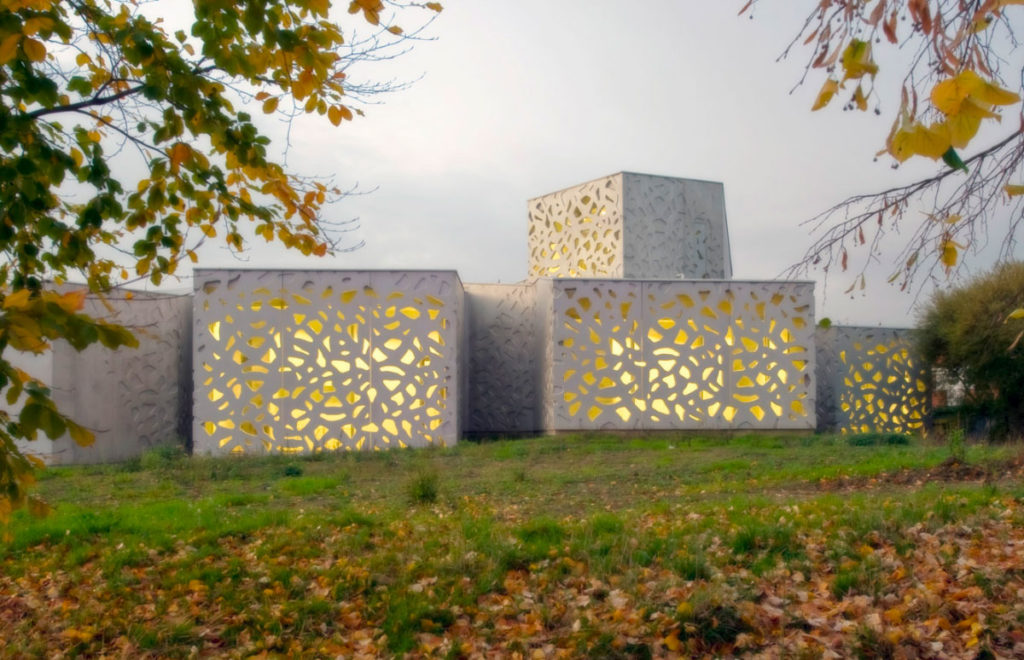
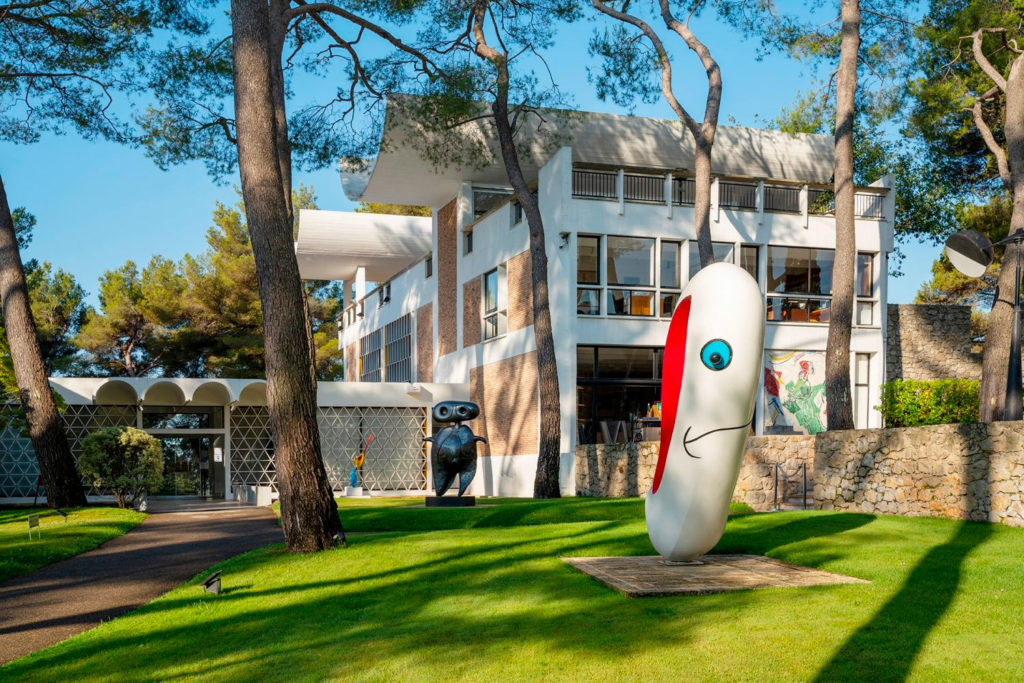
Fondation Maeght – Saint-Paul-de-Vence
The Fondation Maeght is a private institution dedicated to modern and contemporary art, located in Saint-Paul-de-Vence, in the Alpes-Maritimes region of southern France. It was founded in 1964 by art dealers Aimé and Marguerite Maeght, and designed by the Catalan architect Josep Lluís Sert. The site integrates exhibition spaces, patios, a chapel, and gardens on a forested hillside, offering a close dialogue between art, architecture, and nature.
The collection includes more than 13,000 works by Joan Miró, Alberto Giacometti, Marc Chagall, Pierre Bonnard, and Georges Braque, with a particular emphasis on 20th-century European avant-garde movements. The foundation also hosts temporary exhibitions and supports artists through commissions and site-specific installations.
In 2024, the Fondation added a 500 m² underground extension, designed to preserve the architectural coherence of the original structure. This expansion, costing €5 million (approx. \$5.4 million), was financed mainly by private donors and foundations.
The museum is open year-round, every day except Mondays. Admission is €16 (about \$17.30) for adults. Saint-Paul-de-Vence is accessible by car from Nice (20 km) or by bus from Nice Côte d’Azur Airport. The Fondation is not served directly by rail. Guided tours and public programs are available throughout the year.
XperienceFrance is your travel specialist in France.
